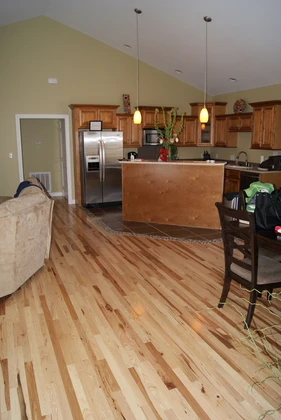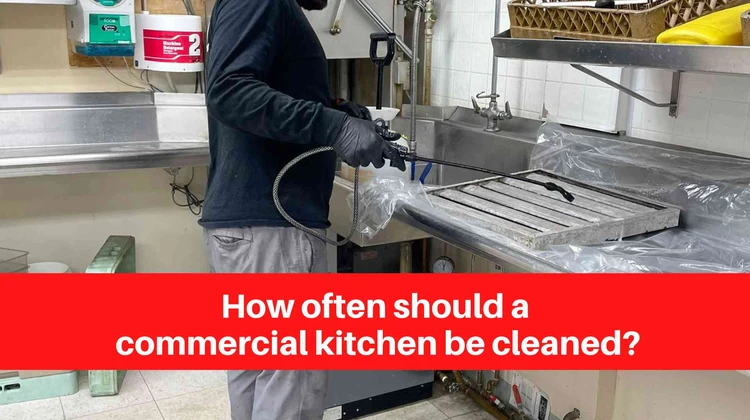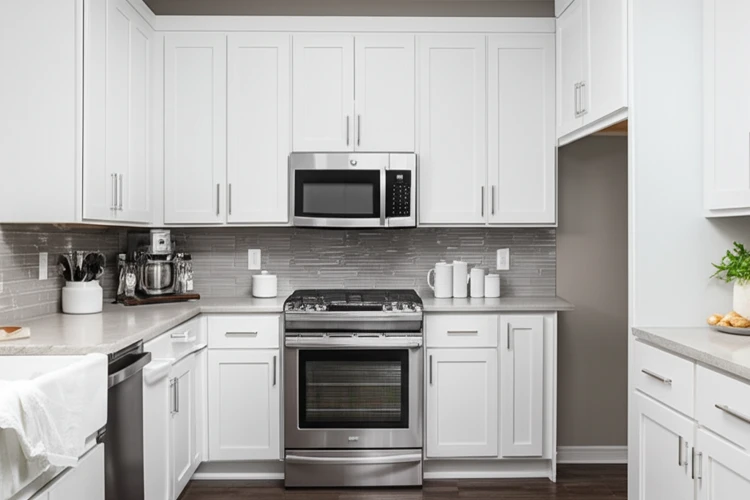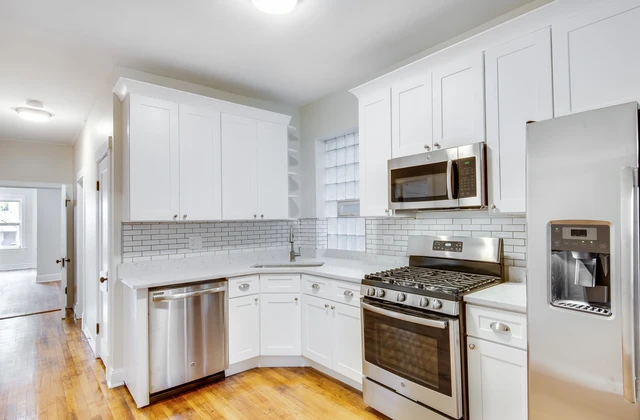Disclaimer: As an Amazon Associate, I earn commission from qualifying purchases.
Kitchen cupboards are a central feature in any kitchen, blending aesthetics with functionality. Choosing the right paint for these cupboards is crucial for ensuring durability, ease of cleaning, and a visually appealing finish. According to industry experts, selecting the appropriate paint can significantly extend the lifespan of your cupboards, reducing the need for frequent repainting.
This blog will delve into the importance of choosing the right paint, the types of paints available, key factors to consider, and best practices for achieving a professional finish. We will also explore eco-friendly options and address frequently asked questions to guide you through the process.
Importance of Choosing the Right Paint
The right paint for kitchen cupboards is essential for several reasons. Kitchens are high-traffic areas subjected to heat, moisture, and grease, which can degrade paint over time. Durability is a primary concern; the paint should resist chipping, peeling, and fading. Additionally, ease of cleaning is crucial, as kitchen cupboards are prone to spills and splatters. A paint that can be easily wiped clean without losing its sheen is ideal. Moreover, the visual appeal of the paint is significant, as it contributes to the overall look and feel of the kitchen. Professional kitchen designers recommend paints that can withstand these conditions while maintaining a polished appearance.
According to a study by the Journal of Coatings Technology and Research, paints specifically formulated for kitchen environments have shown superior durability compared to general-purpose paints. For instance, oil-based paints are known for their hard-wearing finish, while latex paints offer excellent resistance to moisture and stains.
Types of Paints for Kitchen Cupboards
Several types of paints are suitable for kitchen cupboards, each with its pros and cons. Here is a detailed list:
Latex Paint
Pros:
Latex paints are water-based, making them easy to clean up with soap and water. They dry quickly and have low odor, making them a popular choice for DIY projects. Latex paints are also less likely to yellow over time.
Cons: While durable, latex paints may not adhere as well to previously painted surfaces without proper preparation. They can also be less resistant to heat and moisture compared to oil-based paints.
Oil-Based Paint
Pros:
Oil-based paints provide a hard, durable finish that is resistant to moisture and heat. They offer excellent adhesion and a smooth, level finish.
Cons: These paints take longer to dry and have a stronger odor. Cleanup requires mineral spirits or paint thinner, which can be more challenging. Additionally, oil-based paints tend to yellow over time.
Chalk Paint
Pros:
Chalk paint is known for its matte finish and ease of application. It requires minimal preparation and adheres well to various surfaces. It is also versatile, allowing for distressed or shabby chic looks.
Cons: Chalk paint may not be as durable as latex or oil-based paints and can be more prone to chipping and scratching. It also requires a wax or sealant to protect the finish.
Satin Paint
Pros:
Satin paint offers a velvety finish that is easy to clean and more durable than flat or eggshell finishes. It provides a good balance between aesthetics and functionality.
Cons: Satin paint can highlight imperfections in the surface, requiring a meticulous preparation process. It may also show brush strokes more prominently.
Key Factors to Consider When Choosing Paint
Several factors influence the final outcome when choosing paint for kitchen cupboards:
Finish
The finish of the paint affects both durability and aesthetics. Gloss and semi-gloss finishes are highly durable and easy to clean, making them ideal for kitchens. Satin finishes offer a good compromise between durability and a smoother look. Matte or flat finishes, while aesthetically pleasing, are less durable and harder to clean.
Color
The color choice is not just about aesthetics; lighter colors can make a kitchen feel brighter and more spacious, while darker colors add depth and drama. Neutral colors are versatile and easy to match with other kitchen elements. However, lighter colors may show dirt and stains more easily, requiring more frequent cleaning.
Durability
Durability is a critical factor, especially in high-traffic areas like the kitchen. Paints with higher durability ratings are less likely to chip, peel, or fade over time. Oil-based and high-quality latex paints are known for their durability.
Ease of Application
The ease of application can affect the final outcome. Latex paints are generally easier to apply and dry quickly, making them suitable for DIY projects. Oil-based paints, while more durable, require more skill and time to apply correctly.
Step-by-Step Guide to Painting Kitchen Cupboards
Painting kitchen cupboards involves several steps to ensure a professional finish:
Preparation
Begin by removing all hardware from the cupboards, including hinges, knobs, and pulls. Clean the surfaces thoroughly to remove any grease, dirt, or residue. Use a degreaser or TSP (trisodium phosphate) for a deep clean. Sand the surfaces lightly to create a rough texture that helps the paint adhere better. Wipe off any dust with a tack cloth.
Priming
Apply a primer suitable for the type of paint you are using. Priming helps to seal the surface and provides a base for the paint to adhere to. Allow the primer to dry completely according to the manufacturer’s instructions.
Painting
Use a high-quality paintbrush or roller to apply the paint. Start with the edges and corners, then move to larger areas. Apply thin, even coats, allowing each coat to dry completely before applying the next. Sand lightly between coats to remove any imperfections.
Finishing
Once the final coat is dry, apply a sealant or topcoat if recommended by the paint manufacturer. This step adds an extra layer of protection and durability. Reattach the hardware and allow the paint to cure fully before using the cupboards.
Tools and Techniques
Use high-quality brushes and rollers for a smooth finish. Foam rollers are ideal for latex paints, while natural bristle brushes work well with oil-based paints. Techniques such as cross-hatching can help distribute the paint evenly and minimize brush strokes.
Best Practices for Painting Kitchen Cupboards
Ensuring a smooth and durable paint job involves several best practices:
Ventilation
Proper ventilation is crucial to prevent the buildup of fumes and ensure the paint dries correctly. Open windows and use fans to circulate air during the painting process.
Cleanup
Clean brushes and rollers thoroughly after use to extend their lifespan. Use soap and water for latex paints and mineral spirits for oil-based paints. Dispose of paint cans and rags responsibly, following local regulations.
Post-Painting Care
Allow the paint to cure fully before using the cupboards. Avoid placing heavy items on freshly painted surfaces and clean the cupboards gently with a mild detergent and warm water.
Comparison of Popular Paint Brands
Several paint brands are popular for kitchen cupboards, each with its features, benefits, and drawbacks. Here is a comparison:
Sherwin-Williams
Features:
Known for high-quality paints with excellent durability and a wide range of colors.
Benefits: Offers a variety of finishes, including Emerald Urethane Trim Enamel, which is ideal for kitchen cupboards.
Drawbacks: Can be more expensive than other brands.
Benjamin Moore
Features:
Provides a durable, washable finish with a variety of color options.
Benefits: Advance Interior Paint is a popular choice for its smooth finish and ease of application.
Drawbacks: May require more coats for full coverage.
Behr
Features:
Offers a range of paints with good durability and stain resistance.
Benefits: Behr Premium Plus is known for its easy application and quick drying time.
Drawbacks: May not offer the same level of durability as higher-end brands.
| Brand | Features | Benefits | Drawbacks |
|---|---|---|---|
| Sherwin-Williams | High-quality paints with excellent durability | Wide range of colors and finishes | More expensive |
| Benjamin Moore | Durable, washable finish | Smooth finish and ease of application | May require more coats |
| Behr | Good durability and stain resistance | Easy application and quick drying time | Less durable than higher-end brands |
Eco-Friendly Paint Options for Kitchen Cupboards
Eco-friendly paint options are becoming increasingly popular for their reduced environmental impact and health benefits. Here are some options:
Milk Paint
Benefits:
Made from natural ingredients like milk protein and lime, milk paint is non-toxic and biodegradable. It offers a smooth, velvety finish and is available in a variety of colors.
Drawbacks: May not be as durable as traditional paints and requires a sealant for protection.
Low-VOC Paints
Benefits:
Low-VOC (Volatile Organic Compounds) paints emit fewer harmful fumes, making them a healthier option for indoor use. They are available in a range of colors and finishes.
Drawbacks: May have a slightly higher cost compared to conventional paints.
Natural Oil Paints
Benefits:
Made from natural oils like linseed or tung oil, these paints are non-toxic and offer a durable, long-lasting finish.
Drawbacks: Can be more expensive and may require more time to dry.
FAQs
What is the best type of paint for kitchen cupboards?
The best type of paint for kitchen cupboards depends on your specific needs. Latex paints are popular for their ease of application and quick drying time, while oil-based paints offer superior durability. Chalk paint is ideal for a distressed look, and satin paint provides a good balance between aesthetics and functionality.
How do I prepare my kitchen cupboards for painting?
Preparation involves removing hardware, cleaning the surfaces with a degreaser, lightly sanding, and applying a primer. Ensure the surfaces are dry and free of dust before painting.
Can I paint over existing paint on my kitchen cupboards?
Yes, but proper preparation is crucial. Sand the existing paint lightly to create a rough surface for the new paint to adhere to. Apply a suitable primer before painting to ensure a smooth finish.
What is the most durable paint finish for kitchen cupboards?
Gloss and semi-gloss finishes are the most durable and easiest to clean, making them ideal for kitchen cupboards. Satin finishes offer a good compromise between durability and aesthetics.
How often should I repaint my kitchen cupboards?
The frequency of repainting depends on the paint’s durability and the kitchen’s usage. High-quality paints can last several years, but it’s a good idea to inspect the cupboards annually for signs of wear and tear. Repainting every 3-5 years can help maintain their appearance and functionality.
Is it safe to use eco-friendly paints on kitchen cupboards?
Yes, eco-friendly paints are a safe and healthier option for kitchen cupboards. They emit fewer harmful fumes and are often made from natural, non-toxic ingredients. However, ensure the paint is suitable for kitchen environments and offers the required durability.
Conclusion
Choosing the right paint for kitchen cupboards is a critical decision that affects both durability and aesthetics. By understanding the importance of paint selection, exploring different types of paints, and considering key factors, you can achieve a professional finish that lasts.
Following best practices and maintaining the cupboards properly will ensure they remain in excellent condition for years to come. Whether you opt for traditional paints or eco-friendly alternatives, selecting the right paint will enhance your kitchen’s overall appeal and functionality.







